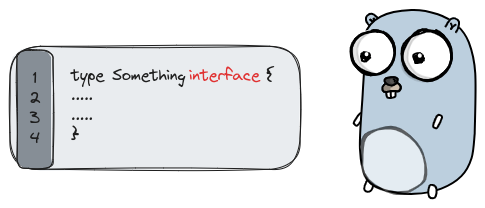Elevating Code Modularity: Harnessing Interfaces for Generic Types and Decoupling in Go
Summary
Introduction:
In Go programming, interfaces serve as powerful tools for defining generic types, streamlining code, and decoupling functionality. By leveraging interfaces, you can write more efficient and flexible code that can accommodate various types without explicitly specifying each one. In the previous blog, we learned about the basics of Interfaces. This blog post will guide you through the process of using interfaces to define generic types, demonstrate how they simplify code by abstracting common behaviors and showcase how interfaces enable easy modification of functionality without impacting code that utilizes them.

Defining Generic Types with Interfaces
Consider a scenario where you have a pet dog and a pet cat, and you want to create a function that can interact with both animals efficiently. Instead of writing separate functions for dogs and cats, you can define an interface that encapsulates the shared behaviors of these pets.
1
2
3
4
type Animal interface {
Eat()
Sleep()
}
In this example, we define an Animal interface that includes common methods like Eat() and Sleep(). Now, any type that implements these methods will automatically be considered an Animal. By defining an interface, you create a contract that guarantees a set of functionalities for any type that adheres to it.
To illustrate the usage of interfaces, let’s create a function called FeedAnimal():
1
2
3
4
5
func FeedAnimal(animal Animal) {
fmt.Println("I am feeding an animal.")
animal.Eat()
fmt.Println("I am done feeding the animal.")
}
The FeedAnimal() function takes an Animal as an argument and performs actions like feeding and interacting with it. This function remains agnostic about the specific type of animal and can work with any object that implements the Animal interface.
1
2
3
4
5
6
7
8
9
10
11
func main() {
dog := Dog{name: "Spot"}
cat := Cat{name: "Mittens"}
fmt.Println("The dog is named ", dog.name)
fmt.Println("The cat is named ", cat.name)
FeedAnimal(dog)
fmt.Println("-------")
FeedAnimal(cat)
}
By passing both a Dog and a Cat to the FeedAnimal() function, you can see that the function successfully interacts with both types, despite their inherent differences. This demonstrates the power of using interfaces to define generic types and write more versatile code.
Decoupling Code with Interfaces
Interfaces can also facilitate code decoupling, enabling you to modify behavior without impacting the code that relies on it. Consider a scenario where you have a struct called Dog with an Eat() method:
1
2
3
4
5
6
7
type Dog struct {
name string
}
func (d *Dog) Eat() {
fmt.Println("The dog is eating.")
}
Similarly, you can define a struct Cat with its own implementation of the Eat() method:
1
2
3
4
5
6
7
type Cat struct {
name string
}
func (c *Cat) Eat() {
fmt.Println("The cat is eating.")
}
Both the Dog and Cat types implement the Animal interface by providing their respective Eat() methods. Now, let’s modify the FeedAnimal() function to demonstrate the flexibility achieved through interfaces:
1
2
3
4
5
func FeedAnimal(animal Animal) {
fmt.Println("I am feeding an animal.")
animal.Eat()
fmt.Println("I am done feeding the animal.")
}
Even though the Dog and Cat eat differently, the FeedAnimal() function remains unchanged. This highlights the power of interfaces in decoupling code, as you can easily swap implementations without affecting the consuming code.
1
2
3
4
5
6
7
func main() {
dog := Dog{name: "Spot"}
cat := Cat{name: "Mittens"}
FeedAnimal(dog)
FeedAnimal(cat)
}
In this example, both the Dog and Cat objects are successfully fed using the FeedAnimal() function, which demonstrates how interfaces enable easy modification of behavior without impacting code that utilizes the interface.
Conclusion:
Interfaces in Go provide a flexible and efficient approach to defining generic types, simplifying code, and decoupling functionality. By employing interfaces, you can write code that can work with various types as long as they adhere to the defined interface, reducing redundancy and improving code maintainability. Furthermore, interfaces enable easy modification of behavior, allowing you to change implementations without affecting code that relies on the interface. Utilizing interfaces in your Go projects empowers you to write more flexible, modular, and maintainable code.